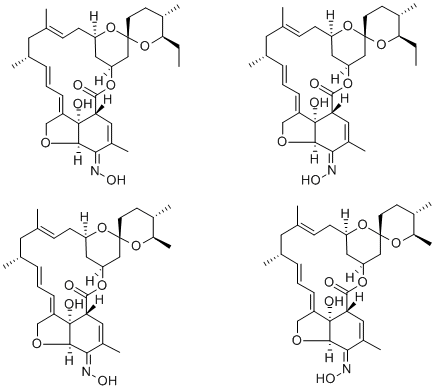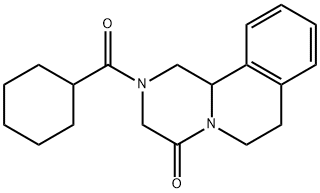
129496-10-2
- Product Name:Milbemycin oxime
- Molecular Formula:2C32H45NO7.2C31H43NO7
- Purity:99%
- Molecular Weight:2194.78
Product Details:
CasNo: 129496-10-2
Molecular Formula: 2C32H45NO7.2C31H43NO7
Appearance: White to off-White crystalline solid
Delivery Time: 2 weeks after order
Throughput: 100KG/Month
Purity: 99%
Synonyms: Milbemite; Milbemycin oxime CRS; Milbemycin Oxime (Mixture of Milbemycin Oxime A3 and A4); β-phenylacrylophenone
Flash point: 412 °C
Solubility: DMSO:100.0(Max Conc. mg/mL); 91.13(Max Conc. mM)
Stability: Hygroscopic
Description: Milbemycin is an oral medication used as a dewormer and heartworm preventive.
Uses:
Milbemycin Oxime is active against a broad spectrum of nematodes, although it is less potent against heartworms than ivermectin. Its miticide spectrum includes Sarcoptes and Demodex. The USA FDA approval for Milbemycin Oxime as formulated alone does not indicate insecticidal activity. The substance is often combined with other parasiticides to achieve a broader spectrum of action. Such products include: Milbemax (with praziquantel) Sentinel Flavor Tabs (with lufenuron) Recently the drug has been used in marine reef aquaria to control parasitic harptacoid copepod (Tegastidae) infestations on captive hard coral colonies. It is an effective full tank treatment for these parasites because it is not toxic to corals in the dosage required to kill the parasites. Shrimps, crabs and other crustaceans should be removed prior to treatment, as they will be killed by the treatment.
Intestinal parasite deworming in dogs and for heartworm prevention in dogs and cats.
Milbemycin oxime is a semi-synthetic macrocyclic lactone prepared by the oxidation and oximation of a mixture of two natural products, milbemycin A3 and A4 (in ~30:70 ratio). Milbemycin oxime is used therapeutically for the prevention of intestinal parasites in dogs. Like the other milbemycin/avermectins, it was developed for intestinal parasite control in animals and acts by opening glutamate sensitive chloride channels in neurons of invertebrates leading to paralysis by hyperpolarisation of these cells and signal transfer blocking.
Control of animal intestinal parasites.
Mechanism of action:
Like Avermectins, Milbemycins are products of fermentation by Streptomyces species. They have a similar mechanism of action, but a longer half-life than the avermectins. Milbemycin Oxime is produced by Streptomyces hygroscopicus aureolacrimosus. It opens glutamate sensitive chloride channels in neurons and myocytes of invertebrates, leading to hyperpolarisation of these cells and blocking of signal transfer.
Relevant Products
-
Levofloxacin Hemihydrate
CAS:138199-71-0
-
Imidacloprid
CAS:138261-41-3
-
Praziquantel
CAS:55268-74-1








